“The first duty of life is to live. As long as you are curious, you defeat age. But in the end – and of course there is one – we’re all forgotten sooner or later. But not films. That’s all the memorial we should need or hope for.”
~Burt Lancaster
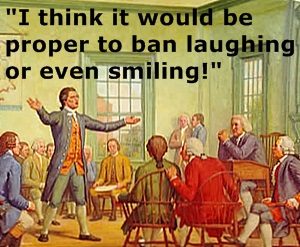
1774 – Delegates to the First Continental Congress created The Continental Association.
Among their goals was the “discouragement of entertainment and manner of dress at funerals.”
“We will, in our several stations, encourage frugality, economy, and industry, and promote agriculture, arts and the manufactures of this country, especially that of wool; and will discountenance and discourage every species of extravagance and dissipation, especially all horse-racing, and all kinds of gaming, plays, and other expensive diversions and entertainments.
And on the death of any relation or friend, none of us, or any of our families, will go into any further mourning-dress, than a black ribbon on the arm or hat, for gentlemen, and a black ribbon and necklace for ladies, and we will discontinue the giving of gloves and scarves at funerals.”
Idle Thought: Those colonists were a fun group of guys.
1803 – The U.S. Senate approved a treaty with France providing for the purchase of the territory of Louisiana, doubling the existing size of the United States.
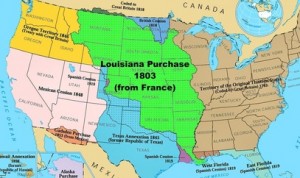
Realizing that it was essential for the U.S. to maintain control of the mouth of the all-important Mississippi River, President Thomas Jefferson sent James Monroe to join the French foreign minister, Robert Livingston, in France to see if Napoleon might be persuaded to sell New Orleans and West Florida to the U.S.
Napoleon, who had previously envisioned creating a mighty new French empire in America, was now facing war with Great Britain. Rather than risk the strong possibility that Great Britain would quickly capture Louisiana and leave France with nothing, Napoleon decided to raise money for his war and simultaneously deny his enemy prime territory by offering to sell the entire territory to the U.S. for a mere $15 million.
Monroe and Livingston decided that they couldn’t pass up such a golden opportunity, and they wisely overstepped the powers delegated to them and accepted Napoleon’s offer.
Despite his misgivings about the constitutionality of the purchase (the Constitution made no provision for the addition of territory by treaty), Jefferson finally agreed to send the treaty to the U.S. Senate for ratification, noting privately, “The less we say about constitutional difficulties the better.”
Despite his concerns, the treaty was ratified and the Louisiana Purchase now ranks as the greatest achievement of Jefferson’s presidency.
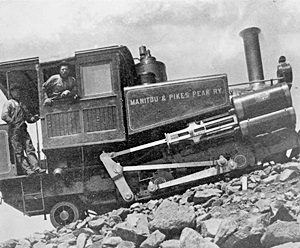
1890 – Construction of the Manitou and Pikes Peak Cog Railway was completed.
Zalmon G. Simmons, founder of the Simmons Beautyrest Mattress Company, started the project.
In 1888, he had traveled to Colorado Springs to inspect telegraph insulators on the side of Pikes Peak. When it took two miserable days to scale the peak by mule, he decided to finance construction of the railway in 1889.
The track, built by Italian laborers, opened in 1891.
It’s Way Up There Factoid: The railway climbs 8.9 miles to the 14,110-foot summit of Pikes Peak. The railway is the highest in North America.
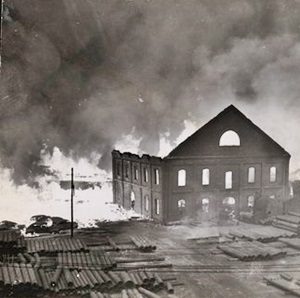
1944 – Liquefied natural gas leaked from storage tanks in Cleveland and then exploded, leveling 30 blocks and killing 130 people.
A cylindrical above-ground storage tank number 4, holding liquefied natural gas in the East Ohio Gas Company’s tank farm, began to emit a vapor that poured from a seam on the side of the tank. Winds from Lake Erie pushed the vapor into a mixed-use section of Cleveland, where it dropped into the sewer lines via catch basins.
As the gas mixture flowed and mixed with air and sewer gas, the mixture ignited. In the ensuing explosion, manhole covers launched skyward as jets of fire erupted from depths of the sewer lines. One manhole cover was found several miles east in the Cleveland neighborhood of Glenville.
Thirty minutes after the first explosion, a second above-ground tank exploded, leveling the tank farm.
Residents who were at home suddenly found their homes engulfed in flame as the explosion traveled through the sewers and up through drains.
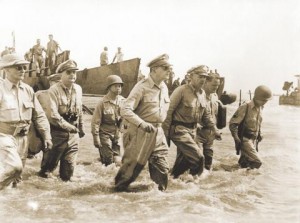
1944 – After advancing island by island across the Pacific Ocean, U.S. General Douglas MacArthur waded ashore onto the Philippine island of Leyte, fulfilling his promise to return to the area he was forced to flee in 1942.
MacArthur had been forced to abandon the Philippine island fortress of Corregidor under orders from President Franklin Roosevelt in March 1942. Left behind at Corregidor and on the Bataan Peninsula were 90,000 American and Filipino troops, who, lacking food, supplies, and support, would soon succumb to the Japanese offensive.
In his absence, 70,000 American and Filipino soldiers were captured and forced to undertake a death march in which at least 7,000 perished. When Corregidor surrendered, 15,000 more Americans and Filipinos were captured.
Only one-third of the men MacArthur left behind in March 1942 survived to see his return.

1947 – The Red Scare kicked into high gear in Washington as a Congressional committee began investigating Communist influence in one of the world’s richest and most glamorous communities: Hollywood.
The House Un-American Activities Committee (HUAC) grilled a number of prominent witnesses, asking bluntly “Are you or have you ever been a member of the Communist Party?”
Whether out of patriotism or fear, some witnesses – including director Elia Kazan, actors Gary Cooper and Robert Taylor and studio honchos Walt Disney and Jack Warner – gave the committee names of colleagues they suspected of being communists.
A small group known as the “Hollywood Ten” resisted, complaining that the hearings were illegal and violated their First Amendment rights. They were all convicted of obstructing the investigation and served jail terms.
Pressured by Congress, the Hollywood establishment started a blacklist policy, banning the work of about 325 screenwriters, actors and directors who had not been cleared by the committee.
Those blacklisted included composer Aaron Copland, writers Dashiell Hammett, Lillian Hellman and Dorothy Parker, playwright Arthur Miller and actor and filmmaker Orson Welles.

1954 – Peter Pan, starring Mary Martin and Cyril Ritchard, premiered at the Winter Garden Theatre on Broadway.
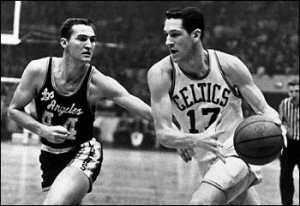
1962 – John Havlicek made his NBA debut with the Boston Celtics.
“Hondo” would end his career with 26,395 points and was part of 8 NBA championships with Boston.
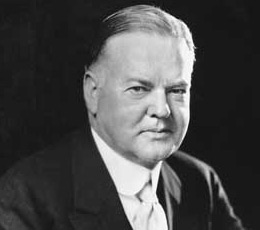
1964 – Herbert Hoover, the 31st President of the United States, died following massive internal bleeding in his upper intestinal tract. He was 90.

1965 – The Beatles recorded We Can Work It Out, mastering the basic track in just two takes, then added vocals and overdubs, including the distinctive harmonium part played by John Lennon (be honest, you always thought that sound was played on an accordion).
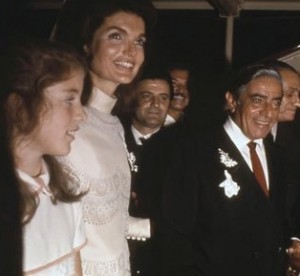
1968 – Five years after the death of President John F. Kennedy, former first lady Jacqueline Kennedy married Greek shipping magnate Aristotle Onassis.
The wedding took place on Skorpios, Onassis’ private Greek island in the Ionian Sea.
Onassis died of respiratory failure at the age of 69 in 1975. His financial legacy was severely limited under Greek law, which dictated how much a non-Greek surviving spouse could inherit.
After two years of legal wrangling, Kennedy eventually accepted a settlement of $26 million from Christina Onassis – Aristotle’s daughter and sole heir – and waived all other claims to the Onassis estate.

1973 – The Saturday Night Massacre
President Richard Nixon ordered Attorney General Elliot Richardson to fire Special Watergate prosecutor Archibald Cox, who had demanded that the president turn over copies of taped conversations recorded in the Oval Office.
Richardson, who had appointed Cox in May of that year, refused Nixon’s order, and resigned in protest. Nixon then ordered Deputy Attorney General William Ruckelshaus to fire Cox. He also refused and resigned.
Nixon then summoned Solicitor General Robert Bork to the White House, had him sworn in as Acting Attorney General, and then told him to fire Cox. Though Bork later claimed he believed Nixon’s order to be valid and appropriate, he considered resigning to avoid being “perceived as a man who did the President’s bidding to save my job.” That may or may not be true, but in any case, Bork wrote the letter firing Cox.
By the way, the White House claimed to have fired Ruckelshaus, but as a Washington Post article written the next day pointed out, “The letter from the President to Bork also said Ruckelshaus resigned.”
The series of resignations and firings outraged the public and infuriated members of Congress, who saw it as a gross abuse of presidential power. Two days later, the House Judiciary Committee began to look into the possible impeachment of Nixon.

1977 – During a flight from Greenville, SC to Baton Rouge, LA, Lynyrd Skynyrd’s tour plane crashed in a heavily wooded area of southeastern Mississippi during a failed emergency landing attempt.
The crash killed band-members Ronnie Van Zant, Steve Gaines and Cassie Gaines as well as the band’s assistant road manager and the plane’s pilot and co-pilot.
Twenty others survived the crash.

1979 – The John F. Kennedy Presidential Library and Museum was formally dedicated on Dorchester Bay in Boston.
Designed by architect I. M. Pei, the building is the official repository for original papers and correspondence of the Kennedy Administration, and includes a detailed replica of Kennedy’s Oval Office.
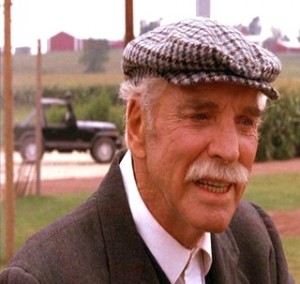
1994 – Actor Burt Lancaster died of a heart attack at the age of 80.
He rose to fame as a Hollywood leading man with over 70 movies to his credit, including From Here To Eternity, Atlantic City, Birdman Of Alcatraz, Judgment At Nuremberg, The Swimmer, Gunfight At The O.K. Corral, Seven Days In May, Field Of Dreams, and Elmer Gantry (for which he won the Academy Award for Best Actor), in a career that spanned more than four decades.

1997 – Henry “The Sunflower” Vestine, guitarist with Canned Heat (On The Road Again, Going Up The Country) died of heart and respiratory failure at the age of 52.

2003 – Actor Jack Elam, who appeared in 73 films – and played the “bad guy” in nearly every one of them – died of congestive heart failure at the age of 73.

2004 – The Boston Red Sox defeated the New York Yankees 10-3 in Game 7 of the American League Championship Series.
The Sox came back from a three-game deficit, the first team in Major League history to do so, and went on to win the World Series, their first title since 1918.
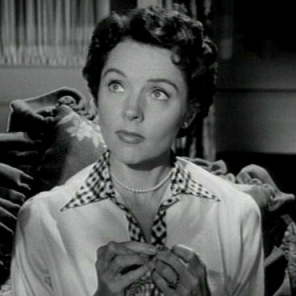
2006 – Actress Jane Wyatt, who starred in a number of Hollywood films, but is best known for her role as Margaret Anderson on Father Knows Best, died of natural causes at the age of 96.

2011 – Muammar Muhammad Abu Minyar al-Gaddafi, the longest-serving leader in Africa and the Arab world, was captured and killed by rebel forces near his hometown of Sirte.
The eccentric 69-year-old dictator, who came to power in a 1969 coup, headed a government that was accused of numerous human rights violations against its own people and was linked to terrorist attacks, including the 1988 bombing of a Pan Am jet over Lockerbie, Scotland.
Compiled by Ray Lemire ©2019 RayLemire.com / Streamingoldies.com. All Rights Reserved.

Your site and its dates in history has to be the best kept secret in the world. Outstanding! I read every word.
Hope you don’t mind. I dropped the link to Oct 20 on my site to lead off the day.
Thanks again, Al.
I appreciate the kind words and the link to your site.
I will be getting back there soon, I promise. 🙂
Love the idle thought Ray — they did sound like a fun loving group of men didn’t they????? And the Way Up There Factoid — have visited Colorado Springs but now wish we’d taken that Cog … Mary Martin will always be “the real” Peter Pan for me – watched it many times when we were growing up – and loved it every time. Wonder what it was like for Gen. MacArthur during the 42-44 time period … had to be an incredibly difficult time for him – but he tried … always so many interesting pieces – another great start Ray — many thanks .
Thank you, Barbara.
I hope you didn’t smile (at all) while reading the column because those early colonists would have frowned on that. 😉
As always, thank you for your support. 🙂
Nice read this morning Ray. Never would be able to do a cog ride but my Mom and Dad did many years back.
Loved Mary Martin in Peter Pan.
Your lessons are better than any newspaper read today!
Thank you, Patty. 🙂
I sincerely appreciate your nice comment. 🙂
Your Idle Thought made me laugh out loud! It’s interesting to learn about the differences of the past, such as the colonists’ way of thinking. At the same time, I also recognize the similarities of corruption within the government (HUAC and Nixon). I’ve been to Winter Garden Theater (but you already know that xoxo)! Love the well-deserved support you get from your loyal readers! This truly is the best kept secret in the world!
Thank you, Wendyl. Yeah, those colonists were a barrel of laughs!
Senator Joseph McCarthy and his “Red Scare” were outrageous but then again, the “Saturday Night Massacre” showed Nixon to be corruption personified.
I had no idea you had been to the Winter Garden Theater. 😉
I do have a lot of loyal readers, including YOU! ❤